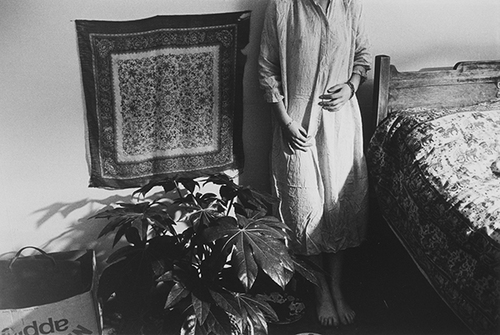Francesca Woodman 1958-1981
Francesca Stern Woodman was an American photographer best known for her black and white pictures featuring either herself or female models. Many of her photographs show women, naked or clothed, blurred, merging with their surroundings, or whose faces are obscured. Her work explored many themes that affected young people and herself, for example: relationships, sexuality, questions of self, body image, alienation, isolation and confusion or ambiguity about personal identity.
I have picked her because I like her gothic like style. It looks like she might be struggling mentally and I want to do something similar because it interests me. The blurry pictures that she takes could indicate that she feels like she doesn’t know who she is or is lost.
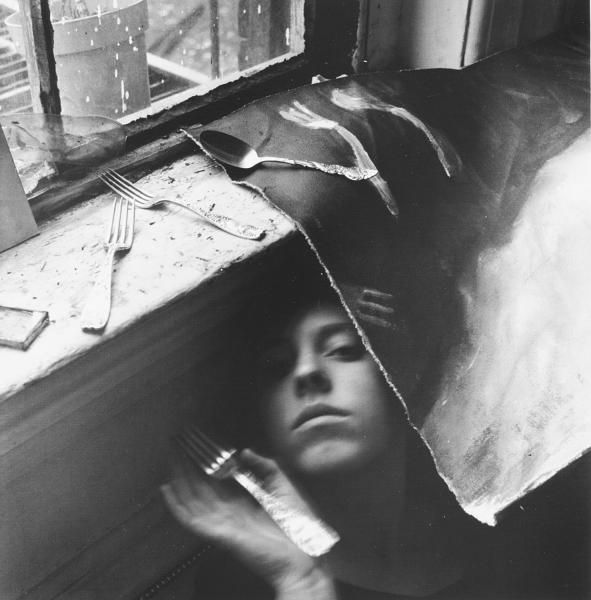

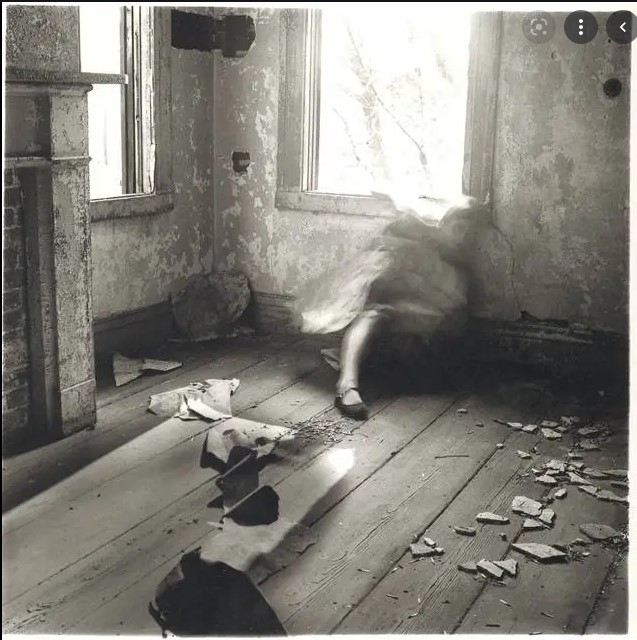
In this image Woodman is in an old house (possibly an abandoned one) and is sitting on the floor by the window however, it’s quite hard to see her figure because it’s all blurry.
Claude Cahun 1894-1954
Claude Cahun was a French surrealist photographer, sculptor and writer. They are best known for their androgynous self-portraits that focus on identity, gender and social norms. During the second world war they lived in Jersey Channel Islands with their partner Marcel Moore until 1954. Because they lived here during the occupation, they got imprisoned and sentenced to death due to their resistance activities; however, it never got carried out because Jersey was liberated . They would go to town with their partner dressed as old ladies and place German messages about the idiocy of war on car windows and inside cigarette packets.
“Masculine? Feminine? It depends on the situation. Neuter is the only gender that always suits me.”

Here Cahun is wearing “masculine” clothing and has shaved hair. This was no very common for “women” at the time. 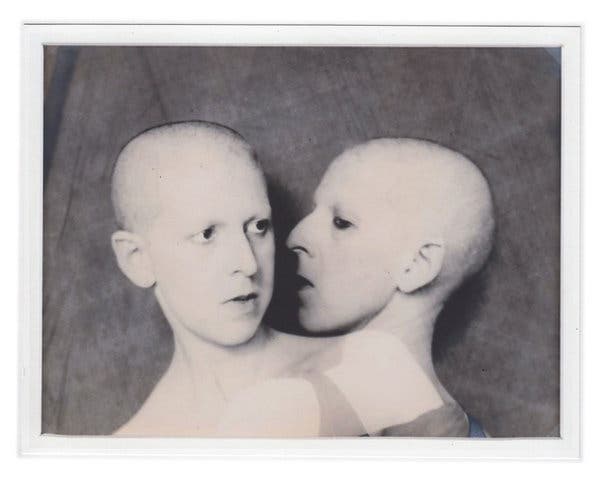
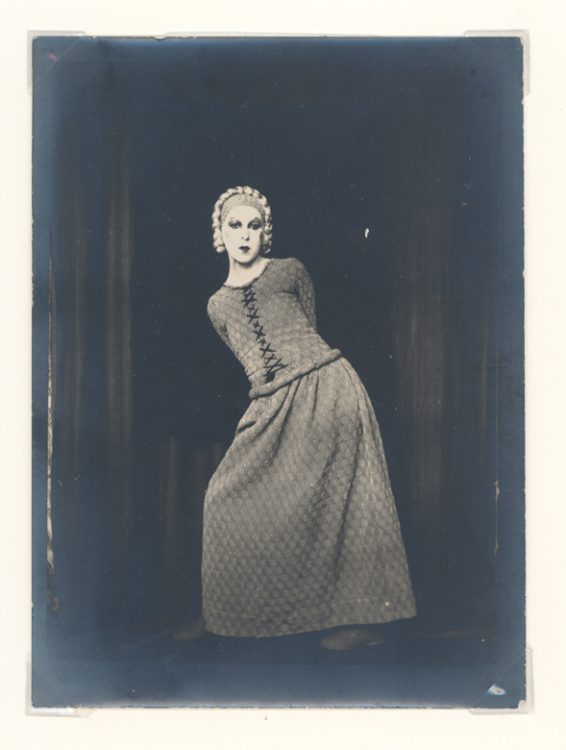
Lorna Simpson 1960
Lorna Simpson is an American photographer that became well known in the 1980s for exploring themes and ideas relating to identity politics. Identity politics focuses on the lives and experience of those who are often marginalised in society such as people of colour, women and gay people. She combines her photographs with words and questions and challenges the narrow ideas surrounding women, culture and race.
I like her work as it focuses on gender norms and stereotypes. I think her use of sequences is quite powerful and it’s something I would like to incorporate into my own work.
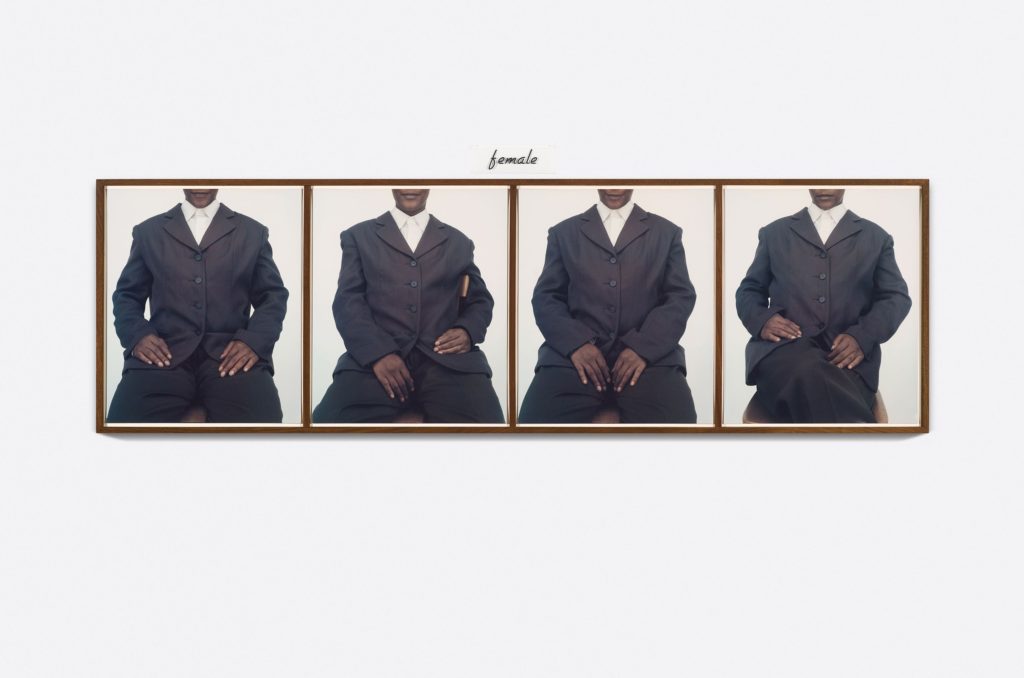
This is a sequence of 4 different images of a model (possibly Simpson herself) sitting on a chair and smirking at the camera whilst wearing a suit (stereotypically masculine clothing). In 3 out of 4 images they have their legs spread out and their hands on their lap, which is something that looks more masculine than feminine. The word “female” is shown at the top of the images. 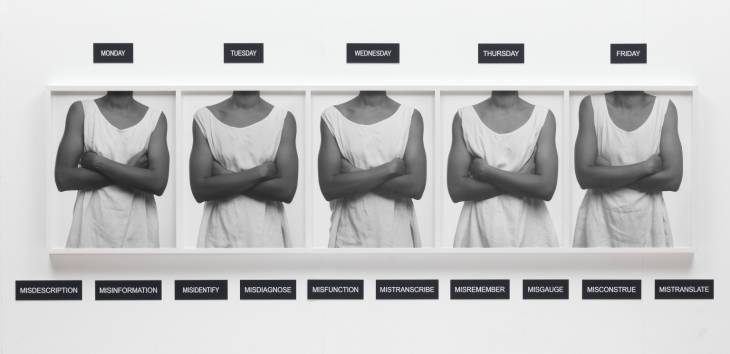
Angela Kelly 1950
Angela Kelly is an Irish photographer that moved from Belfast to the US as a full- time Visiting Artist at the School of the Art Institute, Chicago. One of her early works is called “Woman’s Identity” and is from 1975-79. In this project she takes on the conscious idea of a self portrait as both problematic and self empowering, and issues of feminism, identity and place. The title refers to a singular woman’s gaze rather than assuming a universal status for all women.
I picked her because I like how all of her work is simple and how she doesn’t show her full face in any of the photographs, which could indicate that she doesn’t want to be known and is not important enough because she is a woman and at the time men had more power and importance.
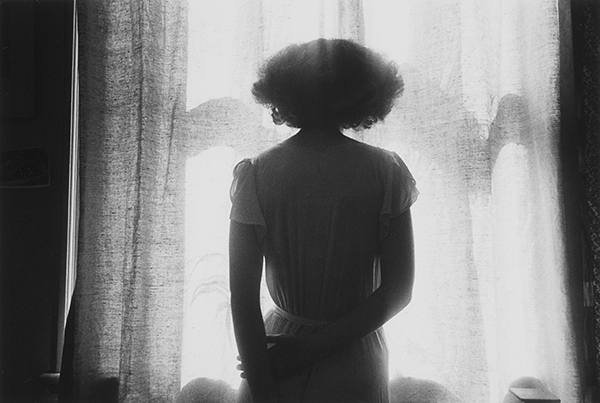
I like this image because to me her looking out the window with the curtains shut shows that she trapped inside her own house and unseen. The light from the window also makes it look more magical which is really nice. 